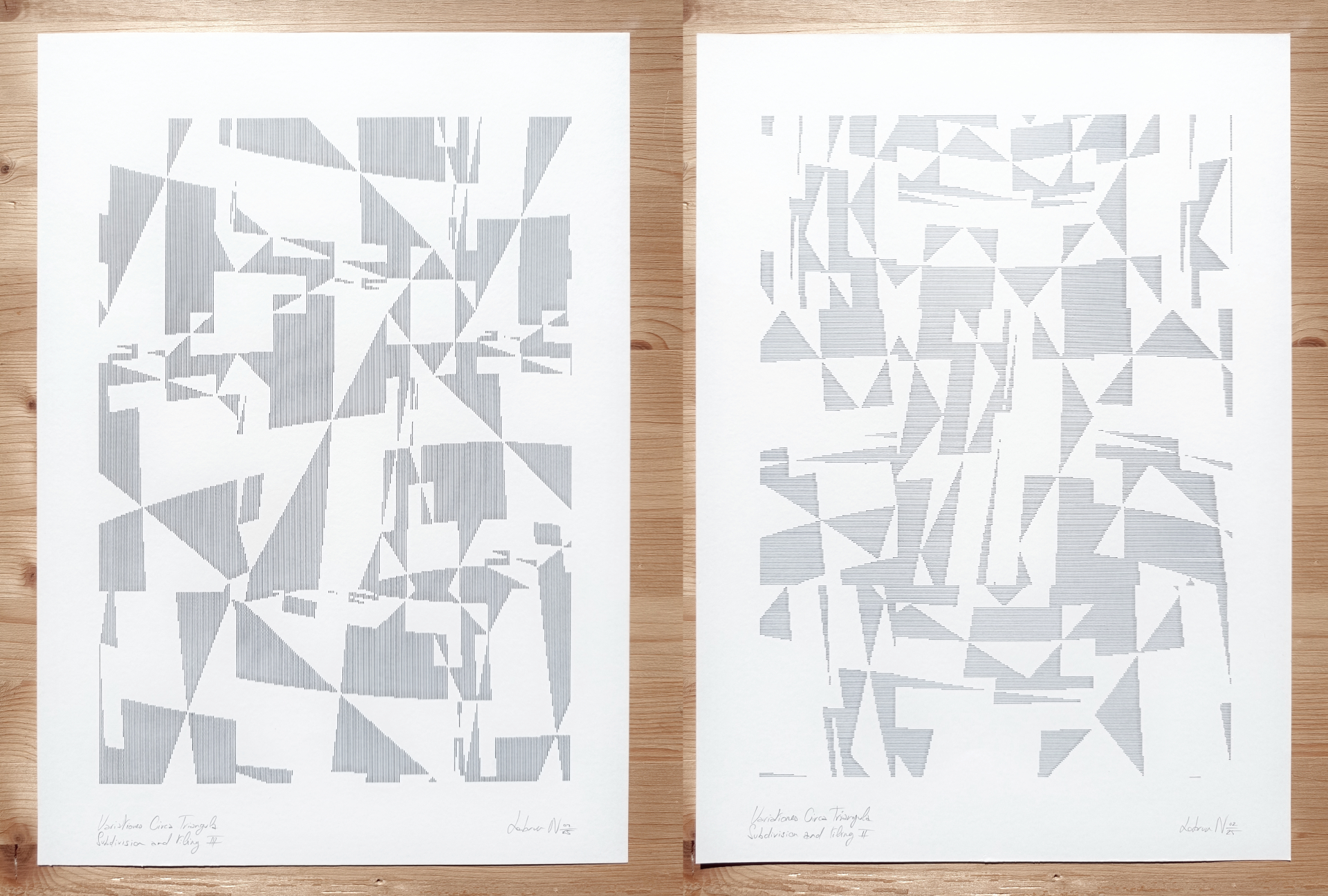
Programming (shaders and JavaScript) plotter drawing, fountain pen or Rotring, Fabriano Technico n°6 240gm/m² A3, 2025.
This series of generative drawings, like all Variationes Circa Triangula works, is based on compositions of triangles.
The program uses two grids to draw compositions.
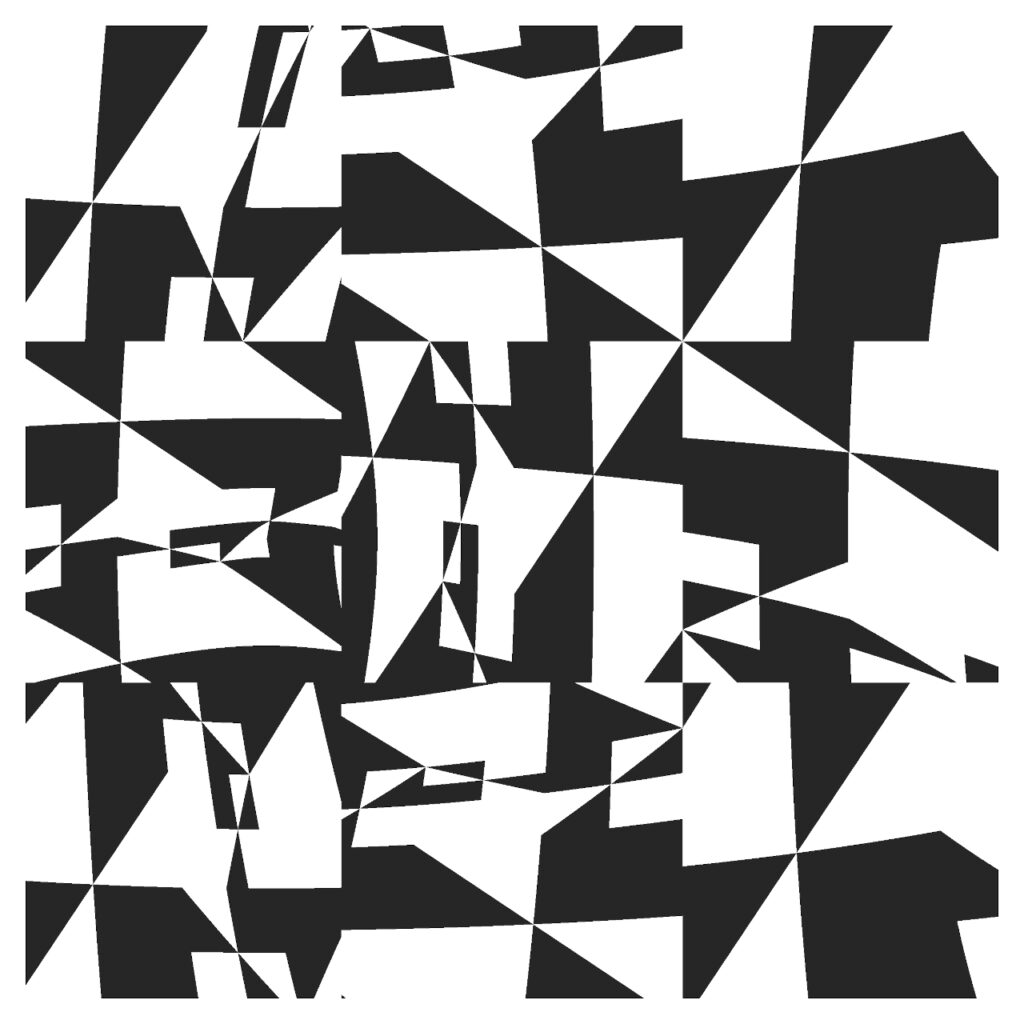
The first, a regular grid, is used to deform the space, applying a progressive enlargement that bends the space in one direction or another within the composition. Each point in the composition has its own magnification value, calculated according to the point’s distance from a random point. Just as in a geodesic construction, where the edges of the faces are aligned with the center of the structure, here the magnification effect is determined in relation to a random center. In addition to this curvature, each grid cell is rotated. Depending on its order, the cell will be rotated by forty-five, ninety, one hundred and thirty-five or 0 degrees.
The second grid is simpler, modular: like a Mondrian painting, it contains cells that can themselves contain several cells. This second grid is used to place triangles, to create solids and voids, since the program will reuse the width and height of each cell to draw triangles.
These two grids don’t participate in the same way in the creation of the composition: the first modifies depth, or even space, while the second is used to place elements on top, to draw a pattern.
This first protocol creates an image that serves as the basis or matrix for other programs.
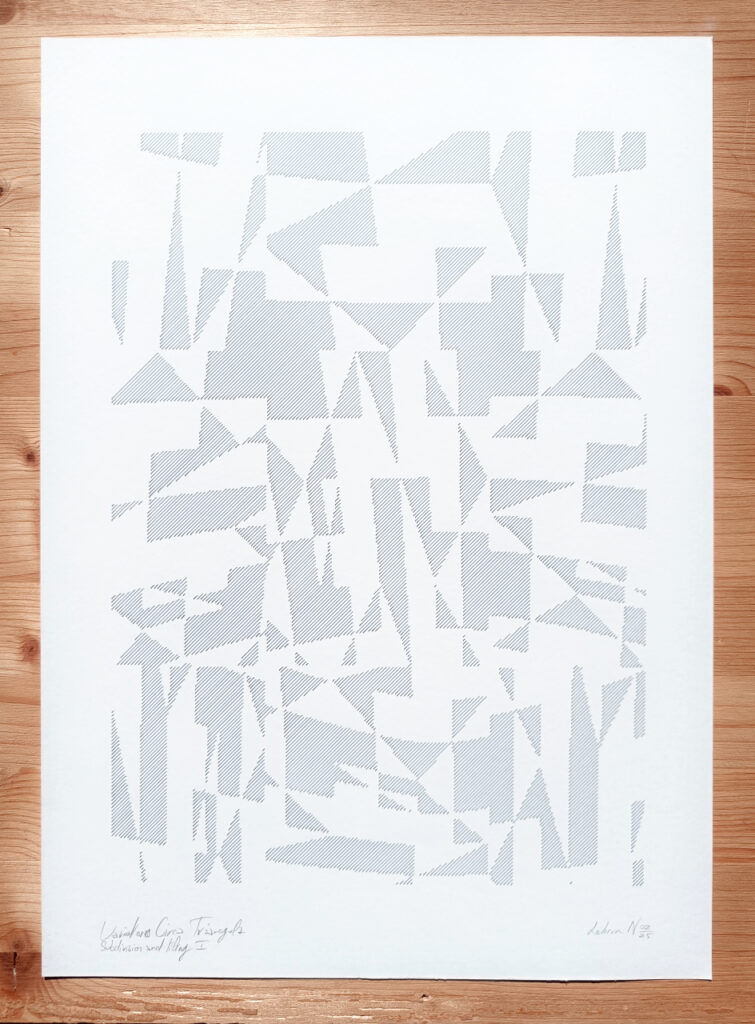
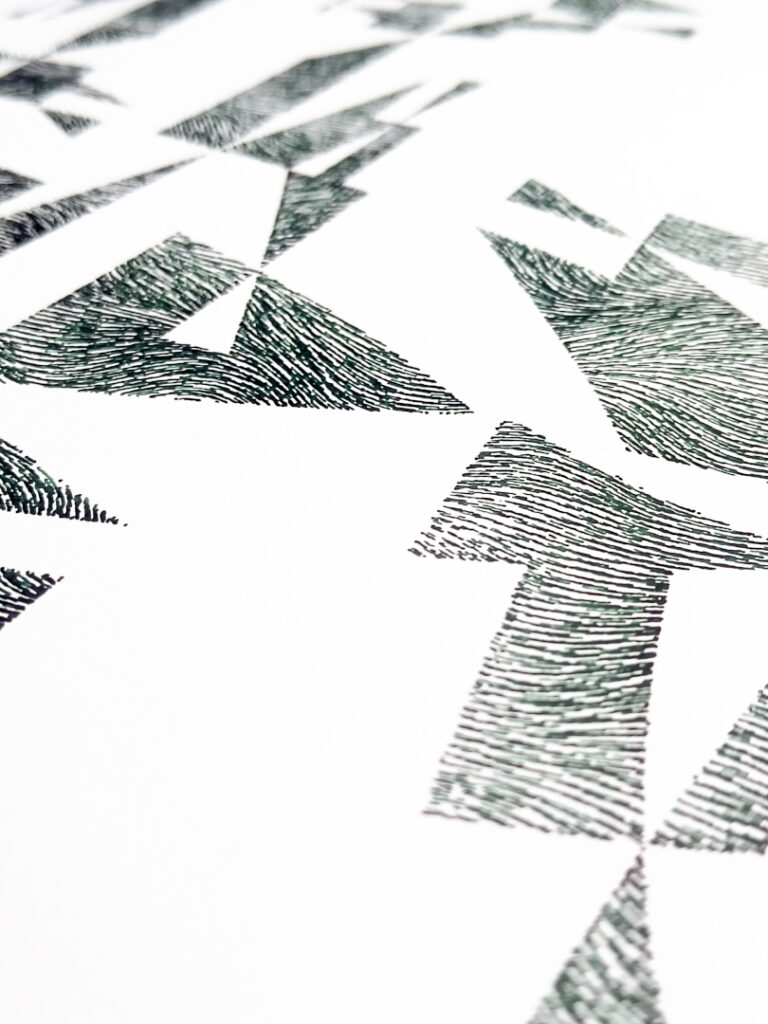
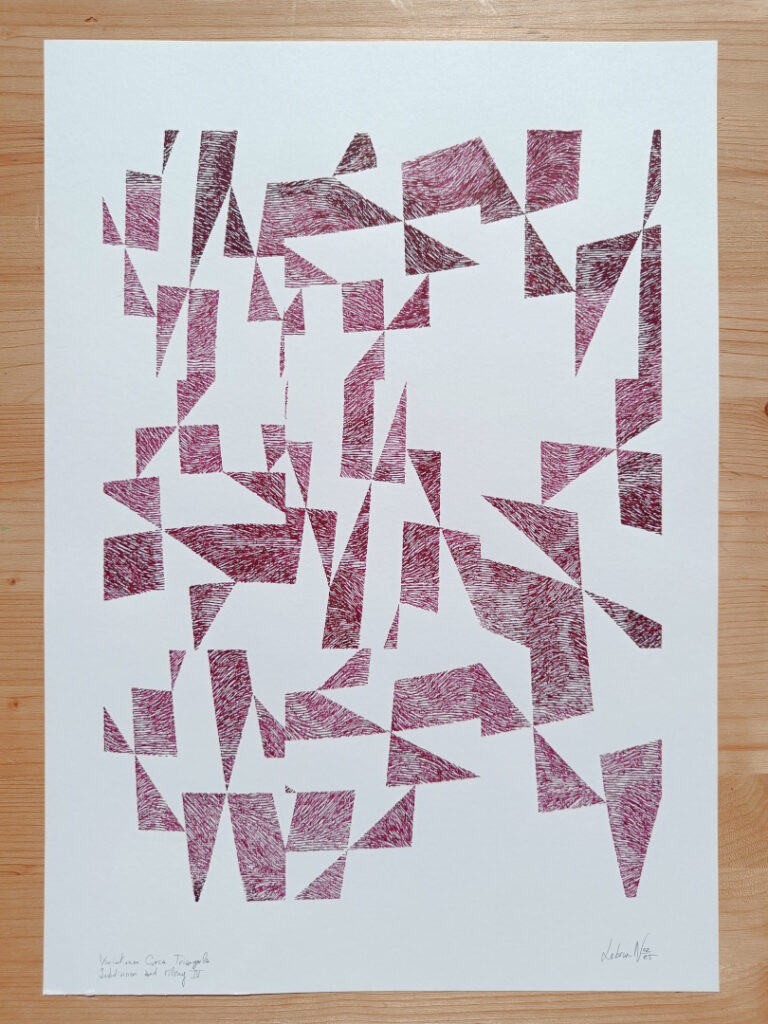
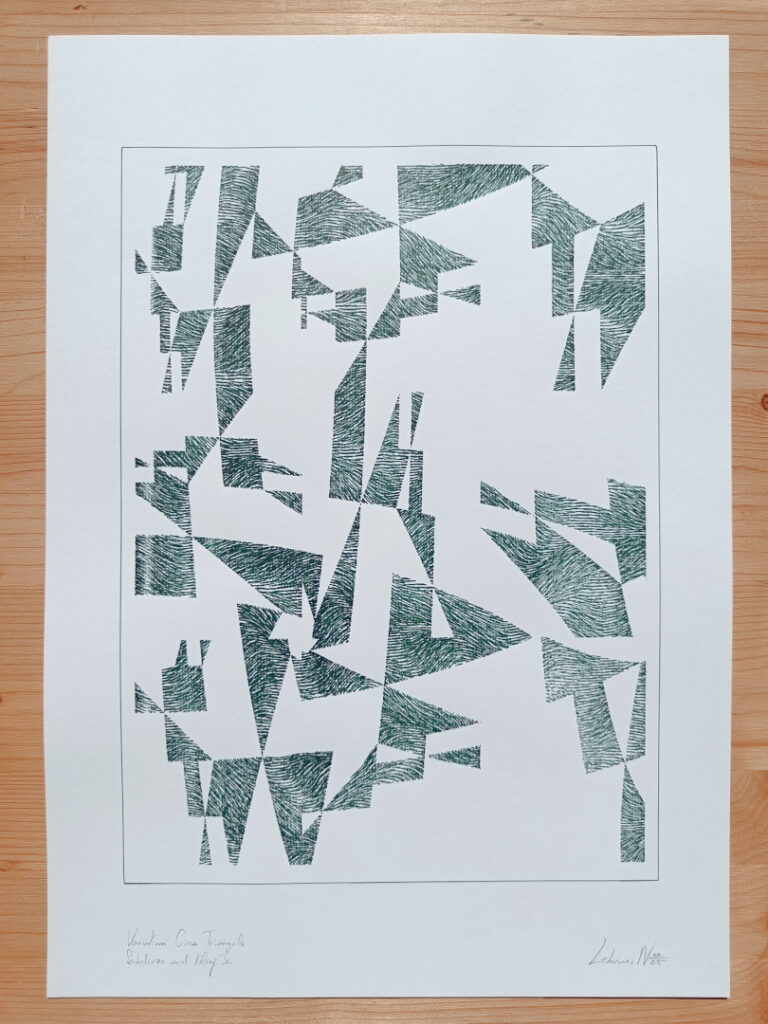
Their principles are to fill solid shapes with successive lines, and to do this, two different strategies will be implemented.
The first protocol consists of using straight lines (horizontal, vertical and diagonal) to run through the composition, and as if using a stencil, the lines are drawn over the solids, leaving the margins and voids untouched.
The second process uses much the same system, except that the lines are curved and shorter. To draw the lines, the program uses a flow or force field in which particles criss-cross and trace paths, giving the lines a more organic appearance, as if they had been produced by hand.